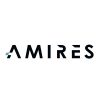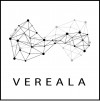 Within the food and animal feed sectors there are a number of applications where nanoproperties can be utilized in a beneficial way.
Within the food and animal feed sectors there are a number of applications where nanoproperties can be utilized in a beneficial way.
Nanotechnologies can be applied to form nanostructures of food ingredients that can enhance taste, texture and consistency of foods (or feed) or allow the creation of emulsions that protect sensitive nutrients. Nanotechnologies can also be applied to increase the storage time of foods. Nanosensors can be incorporated into the packaging to provide the consumer with information regarding storage conditions (e.g. temperature) or the presence of unwanted contamination.
Within animal and feed production, the use of nanomaterials as feed additives have been developed that improve nutrient uptake or reduce the presence of naturally present toxins which improve the overall health status of animals while allowing for efficient feed utilization. NIA participated in the ILSI NanoRelease Food Additive project that in 2014 published several paper in scientific journals.
In the European Union there are several legislations that directly or indirectly addresses nanomaterials used in food:
- In 2011, Regulation (EU) 1169/2011, on the provision of food information to consumers, was adopted. This regulation stipulates that all ingredients present in a food in the form of engineered nanomaterials should be indicated in the list of ingredients, followed by the word ‘nano’ in brackets. The nano labelling rule is applicable from 13 December 2014. There are also other specific regulations e.g. for food additives that specifically addresses nanotechnology.
Support for NIA Members
NIA provides specific support to its Members in the Food & Feed Sector.



















